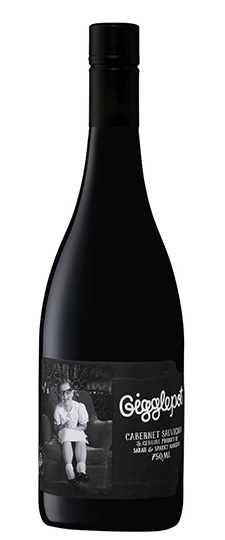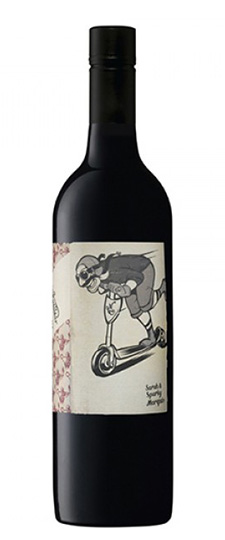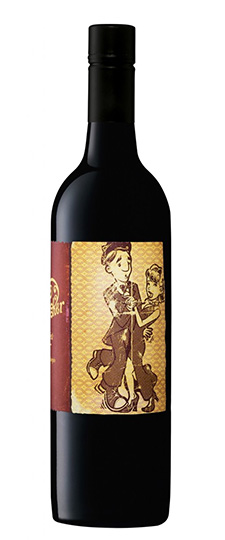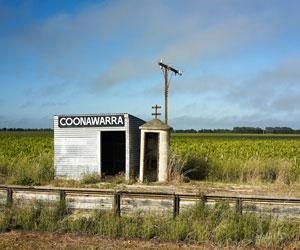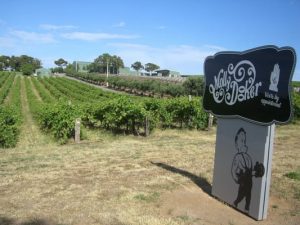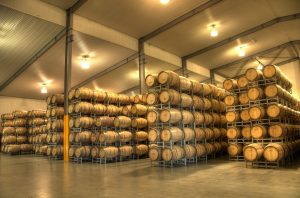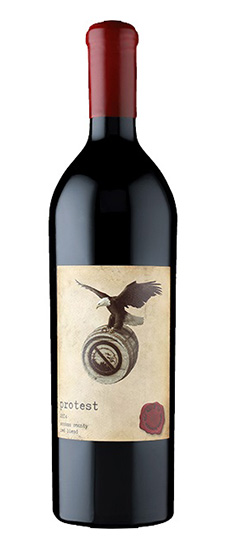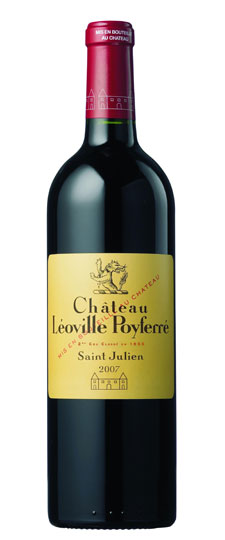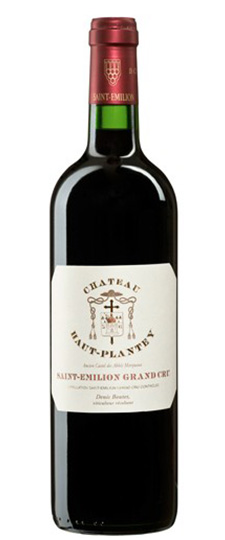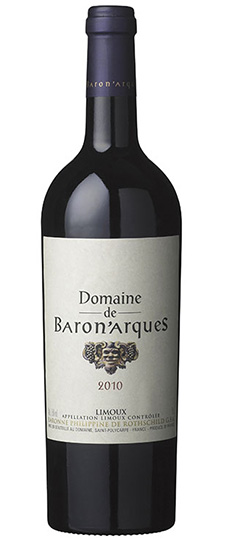Wine Score
Awards
This McLaren Vale wine has received good scores from various critics: the 2015 vintage was given a score of 91 by Wine Spectator.
Based on critic scores and price, this wine represents good value.
Wine Spectator
Dark and dense, plush in texture, tightly packed with pepperaccented black currant and licorice flavors, coming together smoothly on the ripe finish. Shiraz, Cabernet Sauvignon and Merlot.Drink now through 2020.
The Wine Advocate
Made of 69% Shiraz, 16% Cabernet Sauvignon, and 15% Merlot, the deep garnet-purple colored 2012 Two Left Feet Shiraz Blend displays lovely black fruit compote aromas with some spice box, licorice and pepper. Full-bodied and rich, it has spicy, concentrated fruit flavors supported by low to medium levels of velvety tannins and lively acidity. It finishes long.
Two Left Feet Notes
Winemaker Tasting Notes
Shiraz, Merlot and Cabernet dance together in this wine; each varietal element putting their best foot forward! Ripe fruits of dark cherry, blackberry, plum and raspberry are complimented by the secondary notes of vanilla and mixed spices. The silky, satin like fruit profile, encompassed by lovely ripe tannins, cascades effortlessly through the palate providing fantastic depth and a WOW factor.
MARQUIS FRUIT WEIGHT
Marquis Fruit Weight™ is the percentage of your palate (from the tip of your tongue going all the way back) that’s covered by the velvety sensation of fruit, before you experience any of the structural components of the wine.
Technical Notes
The grapes were grown on the Coppermine Road, Ryans Road, Martins Road and Long Gully Road in McLaren Vale. Barrel fermented and matured in 89% American and 11% French oak using 37% new, 44% one year old and 18% two year old barrels.
Alc: 15.5% Residual sugar: 2.6 g/L pH: 3.73
Grape Variety
Shiraz Wine
Shiraz is the name given to the dark-skinned Syrah grape when grown in Australia and selected pockets of the New World. Though genetically identical, the stylistic differences between Shiraz and Syrah are pronounced enough to consider them distinct varieties. Shiraz is so important to Australian viticulture that it is the most planted grape variety in the majority of Australian vineyards and has become virtually synonymous with the country’s wine regions, and in particular the Barossa Valley.
The term Shiraz has its roots in the New World, although there is no one story about how it came to be named this. The prevailing style of Shiraz winemaking reflects its New World roots, though, tending toward bright fruit flavors – most frequently blueberries, blackcurrants and black cherries. Secondary notes of chocolate lend themselves well to the full-bodied texture of these wines, often accented by pepper and spicy inflections.
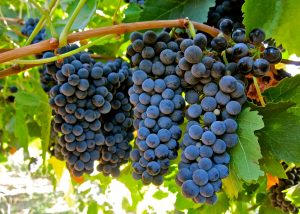 During the 1990s and early 2000s a lot of Australian Shiraz was characterized by highly extracted, super-ripe wines that, for better or worse, caught the attention of wine critics around the world. Some responded well to the style, championing the rich and bold flavors, while others lambasted the wines’ lack of subtlety. Regardless of the divided critics, consumer enthusiasm for Australian Shiraz flourished during this period and countless expressions of the style were exported around the world.
During the 1990s and early 2000s a lot of Australian Shiraz was characterized by highly extracted, super-ripe wines that, for better or worse, caught the attention of wine critics around the world. Some responded well to the style, championing the rich and bold flavors, while others lambasted the wines’ lack of subtlety. Regardless of the divided critics, consumer enthusiasm for Australian Shiraz flourished during this period and countless expressions of the style were exported around the world.
At the dawn of the 21st Century there was a tangible shift in the way a lot of Australian Shiraz was made, with cool-climate styles coming into their own and complexity gaining ground over sheer power. A new generation of wines began to emerge, working towards the elegantly spicy styles of the northern Rhone.
As with Syrah in the Rhone, Australian Shiraz is often blended with Grenache and Mourvedre, creating what has become widely known as GSM. The dark chocolate and cassis of Shiraz, coupled with the plummy richness of Grenache and the earthy, gamey strength of Mourvedre makes for a rich, opulent style often greater than the sum of its parts.
One uniquely Australian application of Shiraz is to blend it with Cabernet Sauvignon. This was a previously unheard-of tradition in the Old World, but the Cabernet – Shiraz blend has become so popular that it now represents a sizable proportion of Australian red wine blends. The other major Shiraz blend emulates the idiosyncratic wines of Cote Rotie by adding a small proportion of Viognier to the wine. Australian Shiraz – Viognier wines have forged a formidable reputation on the international stage; some of the best examples can fetch three-figure prices.
The name Shiraz has become so widely recognized and so highly marketable that it has been used to label Syrah wines in countries other than Australia. In South Africa, the Shiraz naming convention is commonplace and in the U.S., South America and Israel either Syrah or Shiraz may be used depending on fashion. Even a handful of producers in France’s Languedoc-Roussillon have taken to labeling their wines as Shiraz.
Synonyms include: Syrah, Hermitage, Scyras.
Food matches for Shiraz include:
- Beef Wellington
- Malay lamb korma
- Lentils with smoked ham hock
Region
South Australian Wine
South Australia is one of the Australia’s six states, located (as the name implies) in the south of the vast island continent. It is the engine room of the Australian wine industry, responsible for around half of the country’s total output each year. But the region isn’t just about quantity – countless high-quality wines are made here, most of them from the region’s signature grape, Shiraz. These include such iconic wines as Penfolds Grange, Henschke Hill of Grace, Torbreck The Laird and d’Arenberg The Dead Arm.
From east to west, South Australia measures roughly 745 miles (1200km), and borders every other Australian state except the island of Tasmania. Its measurements from north to south are less neat and man-made, as its southern border is formed entirely by the arching coastline of the Great Australian Bight. It is at the eastern edge of this arch, as the coastline plunges southwards into cooler latitudes, that the vast majority of South Australian wine is produced.
The south-eastern corner of South Australia is significantly cooler and less arid than further north, which is simply too hot and dry for viticulture. The climate is moderated by two large gulfs, which bring the cool waters of the Southern Ocean hundreds of miles inland from the main coastline. Between the eastern side of the Gulf of St. Vincent (the smaller of these two) and the Murray River is a belt of green about 50 miles (80km) wide, clearly visible on satellite images. Here, the famous Barossa Valley, Eden Valley, Clare Valley and McLaren Vale wine regions are to be found. For in-depth descriptions of all the South Australian wine regions, see the menu (left).
South Australia’s wine portfolio is heavily focused on powerful red wines, most of which are made from Shiraz. Another variety which thrives here is Cabernet Sauvignon, the best examples of which come from the Limestone Coast in the state’s far south-eastern corner (particularly in Coonawarra, Padthaway and Robe). Grenache has also proved well-suited to the South Australian climate and wine-making style, particularly when combined with Shiraz and Mourvedre to create the classic Australian GSM blend. Such diverse European varieties as Tempranillo, Nebbiolo, Montepulciano and Petit Verdot are also to be found in South Australian vineyards, but only in small quantities.
White wines are not South Australia’s strong suit, with the notable exception of the world-class Riesling that has emerged from the Clare Valley in the past few decades. Almost inevitably, Chardonnay is grown widely here, but rarely produces top-quality wine outside the cooler climes of the Adelaide Hills. Among the less common white-wine varieties are Semillon, Roussanne, Viognier and Verdelho.
Given the size of South Australia, climate and topography vary significantly across the state. Even within the main winegrowing regions in the south-east, the distances are significant; Coonawarra lies a full 275 miles (445km) south-east of the Clare Valley, and 350 miles from the state’s northernmost wine region, the Southern Flinders Ranges. To put this into context, this is an area larger than Portugal.
The winegrowing regions cover six full degrees of latitude (38°S to 32°S). Altitude is also diverse here, ranging from almost sea-level in Langhorne Creek to 600m in parts of the Piccadilly Valley in the Adelaide Hills. This makes it impossible to summarize South Australia’s terroir to any useful degree of accuracy, while also explaining how a single region can produce such diverse wines as crisp, cool-climate Chardonnay and rich, robust Shiraz.
Producer Notes
About Mollydooker Wines
Mollydooker Wines is a family estate in the McLaren Vale district of South Australia particularly known for its full-bodied, silky red wines made from classic Australian grape varieties like Shiraz and Cabernet Sauvignon. These frequently gain high ratings from Wine Spectator and Robert Parker and are among the most sought-after wines produced in Australia.
The label made its debut in 2006, though owners Sarah and Sparky Marquis already had extensive experience working in the wine trade. Success came rapidly for Mollydooker; The Wine Advocate rated the first edition of The Boxer Shiraz the best value red wine in the World, with the estate’s Two Left Feet Shiraz – Cabernet coming second. Mollydooker’s Maitre D’ Cabernet Sauvignon came in fourth, and just for good measure The Violinist white wine topped the best value white wine list. Unsurprisingly the wines sold out in days and this early success fueled the purchase of vineyards and a winery in 2008.
Mollydooker’s three vineyards are planted to Shiraz, Cabernet Sauvignon and Merlot, and total 116 acres (47 hectares). They are situated on the Seaview Ridge and enjoy a Mediterranean climate. The winery crushes around 1300 tons per year and aims for an annual output of 80,000 cases. The only white wines – one still and one sparkling – are made from Verdelho sourced from Gemtree.
The wines are made to emphasize fruit over tannin, and Mollydooker has even trademarked a tasting system to test this. The red wines are barrel-fermented, then oxygenated in tanks before barrel-aging. Specific vineyard lots are vinified and aged separately. The final wines are rich, smooth and approachable when young. They often reach alcohol levels of 16 percent and above, but their huge weight of fruit means that sensations of alcoholic heat are avoided. Mollydooker has also trademarked its own vineyard watering system, which allies close monitoring of vine development with carefully timed irrigation to achieve the healthiest grapes possible.
The term Mollydooker is old slang for a lefthander – owners Sarah and Sparky Marquis are both southpaws.
Vineyards Vineyard Watering
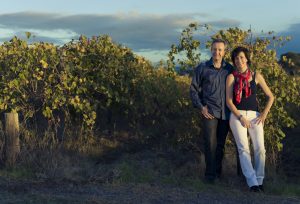 The Marquis Vineyard Watering Programme™ focuses on nurturing strong and healthy vines with balanced canopy growth to achieve the most intense fruit flavours possible. The amazing fruit flavour achieved in the vineyard is what creates the Marquis Fruit Weight™ in the wine. Marquis Fruit Weight™ is the “velvet glove” sensation of fruit that sits on your tongue before the structure of the wine is exposed. The higher the Fruit Weight, the more intense and rich are the flavours in the finished wine.
The Marquis Vineyard Watering Programme™ focuses on nurturing strong and healthy vines with balanced canopy growth to achieve the most intense fruit flavours possible. The amazing fruit flavour achieved in the vineyard is what creates the Marquis Fruit Weight™ in the wine. Marquis Fruit Weight™ is the “velvet glove” sensation of fruit that sits on your tongue before the structure of the wine is exposed. The higher the Fruit Weight, the more intense and rich are the flavours in the finished wine.
Achieving a high Fruit Weight grade doesn’t start in the winery; it starts in the vineyards. We’ve always said “We ripen the vine, so that it can ripen the fruit.”
We’re delighted that now every vineyard producing grapes for Mollydooker is using the Marquis Vineyard Watering Programme™.
The Marquis Vineyard Watering Programme™ is based on intensive data collection and analysis, which starts at bud burst and carries on with inspections of each vineyard throughout the entire growing season. Twice a week throughout the season, the Mollydooker vineyard team measure the growth of the vines, and report on canopy growth, sugar content and the Fruit Weight of the juice. The data is then fed into a complex set of formulas, the results of which provide the team with precise watering recommendations for the following three days.
We have very stringent conditions which growers and vineyards must meet before we even consider bringing them on as one of our hand-picked suppliers.
Generally, we begin working closely with a vineyard in spring, when the vineyard team starts their twice weekly inspections. The aim at this stage is to apply sufficient water to grow the canopy as fast as possible, and to help the vines to be productive in the following year, because the fruiting buds for the following vintage are developed during the spring of the current vintage. This is when the Viticulture team does a shoot and bud count to get an estimate on tonnages for that year.
When the canopy is sufficient, the water is turned off, and the vine starts to concentrate on developing its fruit instead of its vegetative growth. The vines are still measured twice weekly because they are sensitive little darlings, and even during ‘water off’ may, for instance, need to have ‘water on’ whilst flowering to ensure fruit set, and may need a safety watering on exceptionally hot days.
The vineyard inspectors are the heroes of our team. They walk the vineyards on very hot days, braving snakes, mozzies and flies. We send them out in special clothing and camel packs to protect them from the sun and dehydration. Although it is the hardest job, it is also the most coveted one, because we all know that the quality of our wines comes from the work we do in the vineyards.
Once the vines have accepted that they need to begin looking after their fruit, and give up their extravagant canopy lifestyle, the inspectors start authorising water again – in small doses at first, just to make sure the vines don’t go off the rails. Once they have shown that they can behave responsibly, they are fully re-hydrated. We then keep cycling them through the vegetative and reproductive stages so that they can create carbohydrates which ripen and lignify the canes. They then send ripe tannin signals to the grapes, which not only ripens the grapes, but the seeds inside them too.
At this point in the year the grapes are now ready for their bunch samples and the vineyard inspectors begin going through each vineyard collecting samples. Bunches are weighed so that we get an approximate idea of our potential crop, then the grapes are crushed and the juice tasted for colour and flavour. At this stage the grapes usually have a rapidly accelerating sugar level whilst the all-essential flavour level lags behind. Sugar levels depend on heat, but flavour levels depend on time, so we apply a lot of water to dilute the sugar level until the flavour level catches up. We’re looking for that intensity of flavour measured by the Marquis Fruit Weight™.
When the grape juice rates at ‘Awesome’ (one of the terms we use in grading fruit), we pick – usually two weeks later than everyone else. A member of our vineyard team is always present when a block is being harvested, ensuring that the harvester, trucks and equipment are all clean, and that there is no water in any of the bins. The team member then goes with the grape trucks to the winery, and hands the precious loads over to the Mollydooker Receiving Winemaker.
We then apply our Harvest Watering Programme to the vineyards for the next few weeks until the leaves completely fall off. This enables the vines to store carbohydrates for the next season, and to send their roots deeper into the ground. So in autumn, after harvest, our vines stand out – they’re the ones with plenty of growth.
Each vintage is then assessed for pruning recommendations that will foster high quality fruit at the vineyard’s optimum cropping level.
Pruning takes place in the winter and then… bud burst begins in spring and we do it all over again
Our Winery & Vineyards
Our winery is in beautiful scenic McLaren Vale, 30 minutes easy drive from Adelaide. Bordered by the Adelaide Hills and five minutes away from glorious beaches, McLaren Vale is a great place to come visit. It is like a big village, we all know one another, and we all love having visitors. The food here is fabulous, fresh and local, and we have a thriving artistic community.
‘The region is so effortless in the fun-loving lifestyle it exudes, that I always feel a little guilty visiting the area for ‘work’. Lisa Perrotti-Brown, The Wine Advocate.
Our vineyards are situated on the magical Seaview Ridge, which with its ancient soils and Mediterranean climate, is home to some of the most iconic Australian wines. We have three separate vineyards – Long Gully Road, Coppermine Road and the Home Blocks, giving us a total of 114 acres of Shiraz, Cabernet and Merlot. All of our grapes are grown sustainably.
We aim to make 80,000 dozen cases of wine each vintage. The tank farm, barrel hall and crushing area are our cellar team’s pride and joy. We’ve got a 1500 tonne crushing capacity, but we only crush just over 1200 tonnes so that the team has plenty of time to mollycoddle the wines, and to keep the winery spick and span.
Fruit Weight
“We make wines that make people go WOW, through attention to detail and commitment to excellence.” And what makes people go WOW is the Marquis Fruit Weight™.
Fruit Weight™ is the percentage of your palate (from the tip of your tongue going all the way back) that’s covered by the velvety sensation of fruit, before you experience any of the structural components of the wine.
A wine must have at least 65% Fruit Weight™ in order to be considered as a Mollydooker.
The very top wine, Velvet Glove, is the easiest to determine, as it’s very rare to have a wine graded with 95-100% Marquis Fruit Weight™. Generally the wine is profound, was spotted early on, and has led a pampered life. The Love wines, Carnival of Love and Enchanted Path, are made from Shiraz and Cabernet which have 85-90% Marquis Fruit Weight™. The Family wines are made from Shiraz and Cabernet with 75-80% Marquis Fruit Weight™ and the Lefty wines are made from Shiraz, Cabernet, Merlot and Verdelho with 65-70% Marquis Fruit Weight™. In order to be considered for Mollydooker, the wine must measure at least 65% on the Fruit Weight scale. The less lucky wine is rejected for the Mollydooker programme all together, and is sold as bulk wine.
We carefully taste and monitor our grapes and our wines throughout the entire growing and winemaking process in order to assess the Marquis Fruit Weight™.

